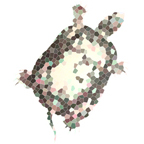Posts Tagged thicktail chub
Presumed Extinct: Fish Out of Water
Posted by Matthew Bettelheim in Endangered Species, Extinct Species, Field Guide, Fisheries, History, Natural History on May 20, 2013
![]()
LOST SPECIES OF THE BAY AREA
Presumed Extinct: Clear Lake splittail, thicktail chub
As with the presumed extinct ivory-billed woodpecker reported in Arkansas in 2004, there is always the chance that a long-lost plant or animal will be rediscovered, thanks to persistent searching and luck. That’s true even in a busy metropolitan area like the San Francisco Bay Area. In May 2005, botanist Michael Park stumbled upon a population of Mount Diablo buckwheat (Eriogonum truncatum) on the slopes of Mount Diablo. The buckwheat was a species long thought extinct, last seen in 1936 by UC Berkeley botany graduate student (and later Save Mount Diablo cofounder) Mary Bowerman.
Spurred by the rediscovery of the buckwheat, it bears asking today which plants and animals endemic to – but presumed extinct in – the San Francisco Bay Area scientists continue to search for in the hope they may still be hanging on by a thread, waiting to be found and protected.
![]()
Clear Lake splittail (Pogonichthys ciscoides)
thicktail chub (Gila crassicauda)

Thicktail chub (Gila crassicauda), top, and Clear Lake splittail (Pogonichthys ciscoides), foreground. Illustration by Devin Cecil-Wishing.
With major fisheries teetering on the brink of collapse, it’s unlikely that many people have noticed the plight of two Bay Area endemic minnows that haven’t touched a creel in 30 years or more. The Clear Lake splittail (Pogonichthys ciscoides), the lake-bound cousin of the Sacramento splittail (P. macrolepidotus), is said to have schooled in great numbers in Clear Lake, the largest natural lake in California. In April and May, the eight-inch-long splittail would venture into upstream tributaries to spawn. Three weeks later, the young would return to the lake to feed on zooplankton and the native Clear Lake gnat in silvery schools that led early settlers to call them “silversides.” In the early 1940s, Clear Lake splittail populations plummeted, but it wasn’t until 1973 that the fish was belatedly recognized as a species. At about that time splittail vanished from the lake, replaced by non-native bluegill and, ironically, the inland silverside (Menidia beryllina). The latter was introduced in 1967 by the state to control vast clouds of annoying but harmless Clear Lake gnats, and it likely outcompeted Clear Lake splittail for shallow shoreline habitat. Other factors that may have tipped the species toward extinction were the channelization and the diversion of Clear Lake’s tributaries, where the splittail spawned.
Although its bones dominate Native American middens along the Sacramento River, Putah Creek, and the Pajaro-Salinas drainage, the thicktail chub (Gila crassicauda) is even less well known. This four-inch-long chub was also found in Clear Lake, the Delta, the Napa River, Alameda Creek, and several other Bay tributaries. Up until the late 19th century, thicktail chub weren’t uncommon in San Francisco fish markets, and their remains have been recovered from 19th-century Chinese privies in the city’s Mission District. But as early as 1884 their populations were reportedly waning. In 1957, the last known specimen was caught in the Sacramento River near Rio Vista. Throughout the species’ range, stream diversions and modifications, the loss of tule beds and shallow lowland lakes, and the introduction of largemouth bass and other nonnative predators likely drove the thicktail chub to extinction.
Since both the San Francisco estuary and Clear Lake are regularly sampled, UC Davis fisheries biologist Peter Moyle says the likelihood of finding either species is close to zero. But Robert Leidy, an ecologist with the U.S. Environmental Protection Agency, remains optimistic about the thicktail chub. “It could possibly show up in any part of its historical habitat,” says Leidy. “It could be upper Coyote Creek, it could be the Pajaro drainage, it could be in North Bay marshes or the Petaluma River.”
Field Guide to the Lost Species of the Bay Area
 SPECIES: Clear Lake splittail (Pogonichthys ciscoides)
SPECIES: Clear Lake splittail (Pogonichthys ciscoides)
LISTING STATUS: none
FIRST/LAST RECORDED: ~1930/~1970
RANGE: known only from Clear Lake in Lake County
HABITAT: Clear Lake and its tributary waters, plus an outlying record from Cache Creek (downstream of Clear Lake)
FIELD NOTES: a lake-bound cousin of the Sacramento splittail (P. macrolepidotus), Clear Lake’s shoreline splittail wasn’t officially described until 1973, approximately the time it went extinct; aside from geographic isolation, the differences between the species are morphological; compared to the Sacramento splittail, the Clear Lake splittail has more gill rakers, more lateral line scales, smaller fins, a terminal mouth with absent or reduced barbels, and a relatively symmetrical tail fin
RESOURCES:
Inland Fishes of California, by Peter B. Moyle
Field Guide to Freshwater Fishes of California, March 13, 1996, by Samuel M. McGinnis
_______________________________________________
SPECIES: thicktail chub (Gila crassicauda)
LISTING STATUS: none
FIRST/LAST RECORDED: present in Native American middens/1957
RANGE: reported specifically in Sacramento River, Putah Creek, Pajaro-Salinas drainage, Clear Lake, San Francisco Bay, Coyote Creek, Central Valley lowlands, and Bay tributary streams
HABITAT: lowland lakes, sloughs, slow-moving river stretches, and surface waters of the San Francisco Bay
FIELD NOTES: thicktail chub remains are reportedly common in Native American middens along the Sacramento River, and have been recovered from 19th-century Chinese privies in San Francisco’s Mission District; in the 19th century the fish was commonly sold in San Francisco fish markets and was served in Sacramento saloons; compared to other chub, the thicktail chub is a heavy-bodied fish with a small, cone-shaped head, greenish brown to purplish black back, and yellowish sides and belly
RESOURCES:
Inland Fishes of California, by Peter B. Moyle
Field Guide to Freshwater Fishes of California, March 13, 1996, by Samuel M. McGinnis
![]()
The account excerpted above was originally featured in the October/December 2007 issue of Bay Nature magazine.
Illustrations by Devin Cecil-Wishing.

